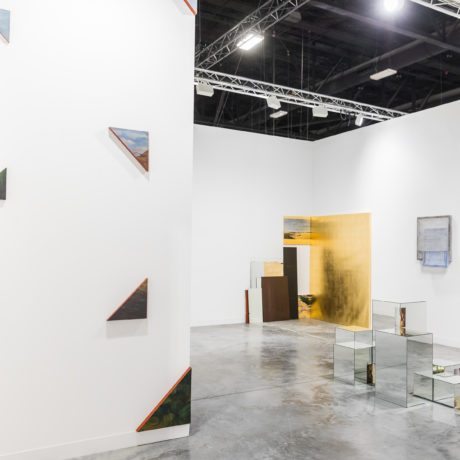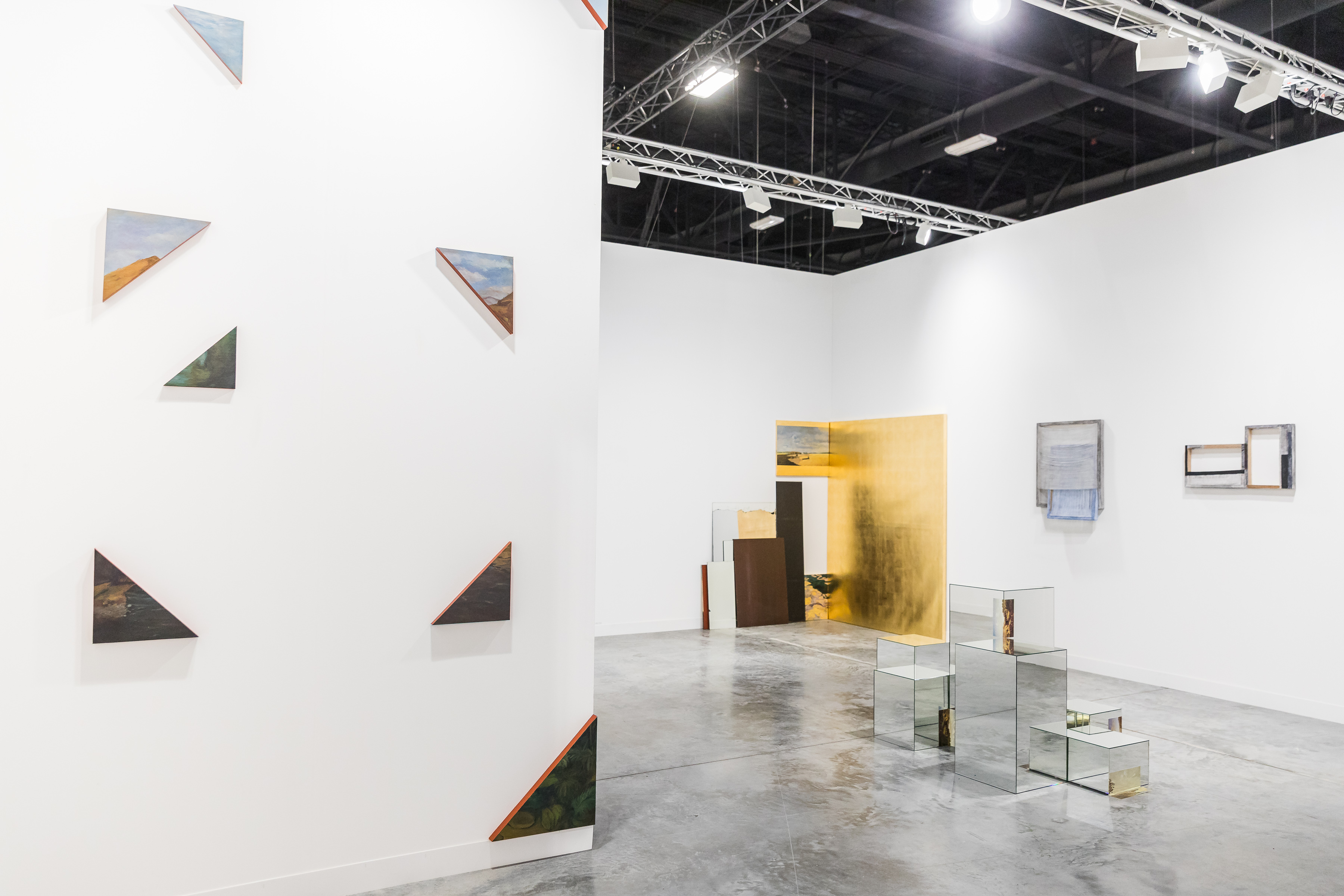
Courtesy Galeria Leme
Far from Studio Drift’s helium-filled, hovering sculpture Drifter (2017), which was exhibited by Pace Gallery at The Armory Show earlier this year, many of the works on view at Basel are delightful in their eccentricity and their lack of sleekness—in other words, their weirdness. Many reference their own objecthood, shying away from the flatness of Instagram and flirting with the many two-dimensional works that surround them; there is a curious interplay between these objects and the more traditional, wall-mounted pieces that galleries have chosen to show alongside them.

Courtesy Cheim & Read
The sixteenth edition of the fair inaugurates several updates to the Miami Beach Convention Center, whose ongoing renovation is expected to be finalized in 2018. One of the most discussed upgrades this year—aside from the new floor plan, which has collectors’ heads spinning—is a slightly larger space, which means wider aisles and roomier booths. One might expect these extra inches to galvanize exhibiting galleries to scale up, bringing bigger work to make their mark. It is refreshing to find the opposite: presentations of work that make us pause, not necessarily to look up or capture the scene on our phones, but to reflect on the history of objects.
A new polyurethane sculpture by Lynda Benglis hangs across from a modestly-sized Louise Bourgeois piece dating from the late 1960, two virtuosi of materiality in conversation, at Cheim & Read’s booth. At Galeria Leme’s booth, a sculptural structure of mirrored cubes by the Peruvian artist Sandra Gamarra that both dissolves into and protrudes from the space is presented alongside wall-mounted works by Jessica Mein that adopt the wall behind them as part of the composition. Scattered across Miami Basel’s airier layout, these dialogues allow visitors to take in the fair’s expanded space via poignant encounters with objects.
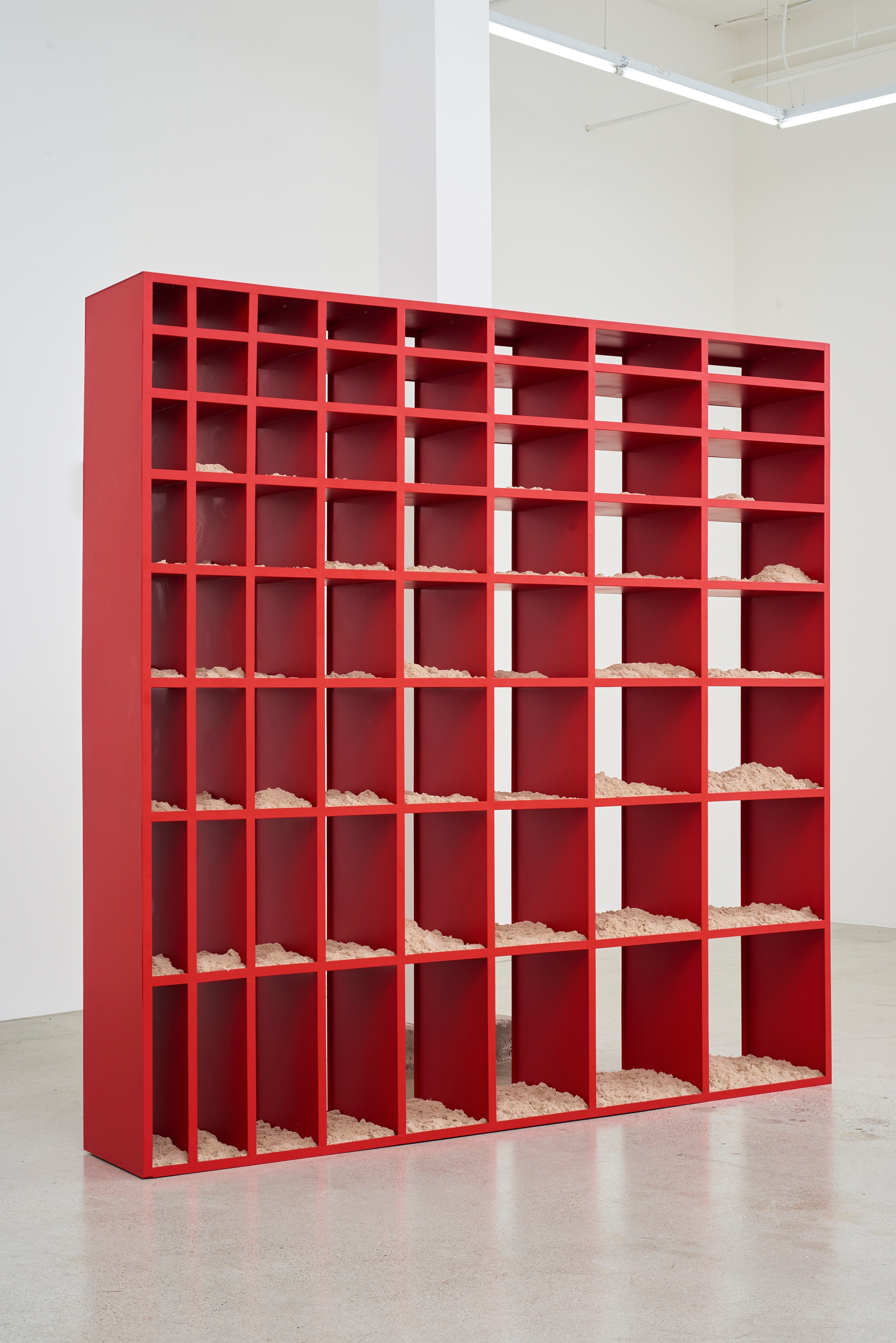
Courtesy the artist and Jessica Silverman Gallery
Even for galleries that lugged sizable work to Miami, the element of surprise lies in materiality and subject matter rather than statement pieces and spectacles. The British gallery Victoria Miro, for instance, is exhibiting Korean artist Do Ho Suh’s polyester fabric sculptures, dreamlike and gossamer architectural environments that converse with the momentous portraiture of Alice Neel on the surrounding walls. The exchange between the two artists and mediums references Do Ho Suh’s conception of his sculptures as self-portraits, establishing a relationship between two- and three-dimensional art. A few booths down, at Jessica Silverman Gallery, Nicole Wermer’s furniture-sized Sand Shelf #1 caught my eye for both its subtle distortion of the art historically ubiquitous grid, evoking Agnes Martin, and its quirky use of kinetic sand.
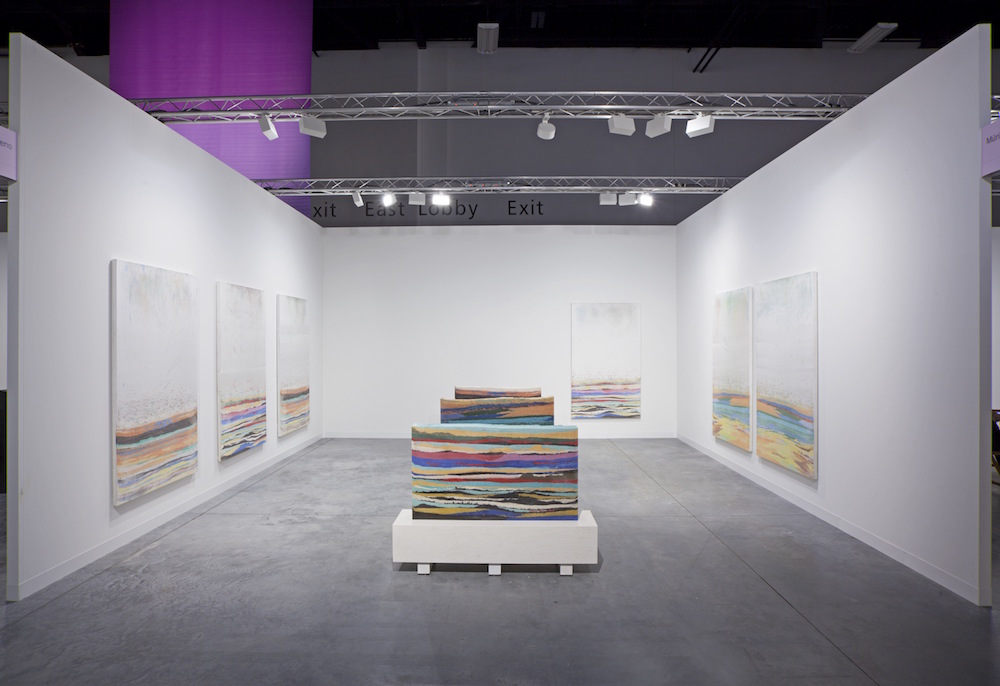
Photo: Sebastiano Pellion di Persano
Many of the exhilarating dialogues between the sculptural and the wall-hung take place within a singular artist’s practice. In the Nova section of the fair, which displays artwork created in the last three years, the Portuguese gallery Múrias Centeno present Sediments of the Mind, a solo booth of wonderfully harmonized sculpture and paintings by the Welsh artist Dan Rees. The rows of pigment piled on Rees’s silk canvases are visually echoed in his very physical, slab-like pieces also exhibited at the booth, composed of clay, wood, sand and other elements. The booth is extremely optically cohesive, but the material discrepancies between the objects are satisfyingly tangible. Meanwhile, New York-based Petzel Gallery exhibit two vastly different works by Wade Guyton: a tubular steel sculpture from 2003 and a large inkjet on linen work from 2016, the medium Guyton is arguably most known for. Featuring a screenshot of The New York Times printed on canvas, this is one of the more political works on view at an edition of the fair that many view as containing a lower quota of social commentary pieces compared to last year.
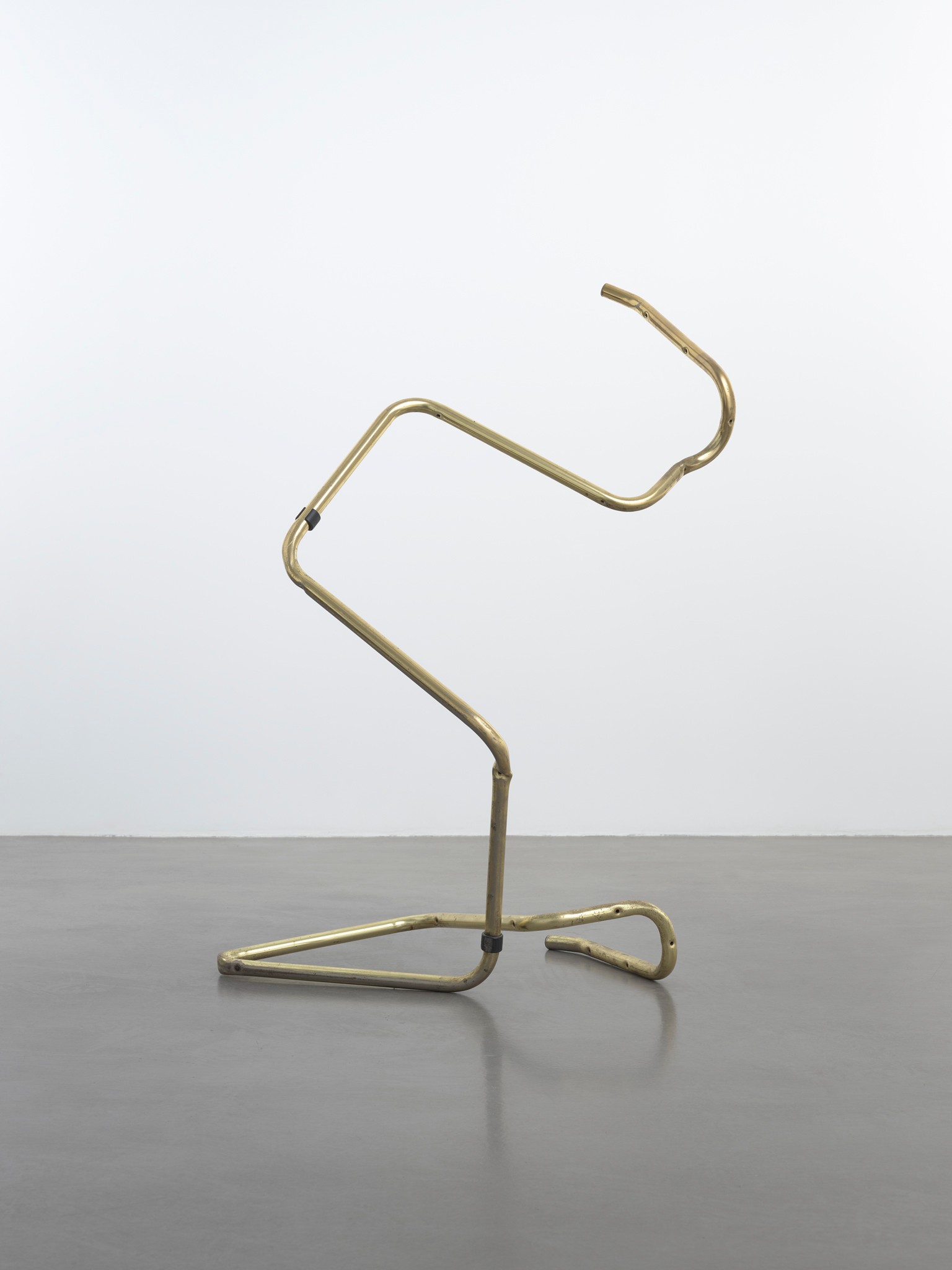
Petzel Gallery
Several galleries are designated “Kabinett” spaces, Art Basel’s term for curated solo exhibitions within a gallery’s booth. The ever-surprising Mexican gallery Kurimanzutto presents Korean artist Haegue Yang, displaying her kaleidoscopic works on paper alongside sculpture that incorporates the mundane and the ready-made. The clash of Yang’s sculpture The Intermediate – Arcane Raggedy Trunk, a brilliantly nonsensical straw and cotton twine structure on casters, and her geometric, aesthetic collages is funny and intriguing. It exemplifies the beauty of contradiction and the importance of humour, common threads across several booth installations this year that are not always prevalent at an art fair.
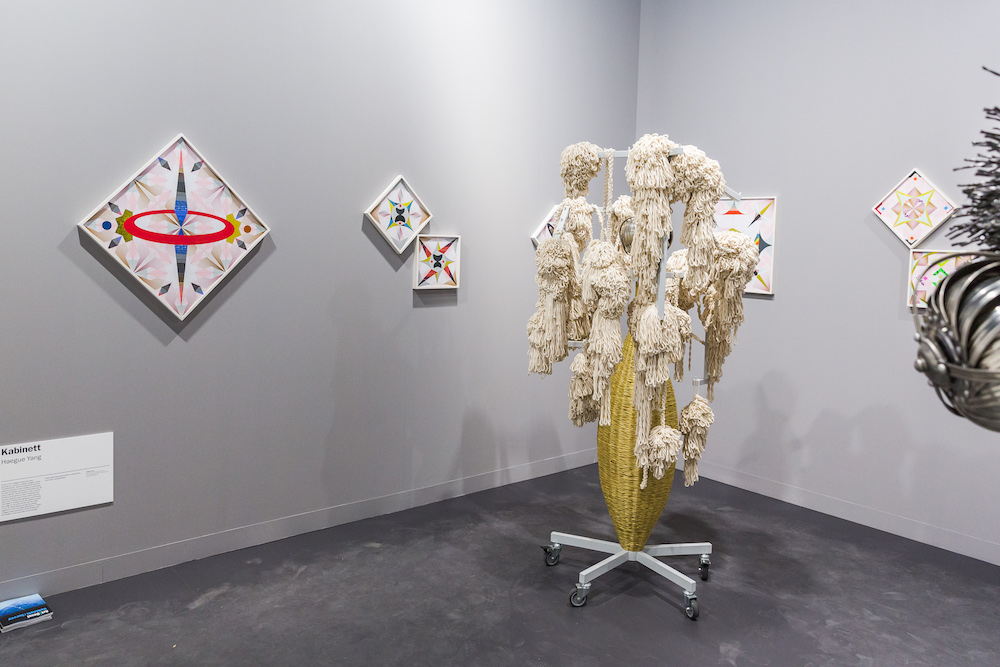
© Art Basel
Perhaps it is the wave of optimism that has washed over me, but I generally feel that galleries are committed to presenting objects that are structurally complex and stimulating in person. Try taking a candid iPhone shot of Jim Shaw’s Hair House, a vertical work on view at Metro Pictures’s booth consisting of long locks of synthetic hair flowing from a miniature house sculpture (I found its real hair counterpart, Nina Beier’s fantastic Automobile sculptures made of toy cars stuffed with human hair, at Standard Oslo’s booth several rows across).
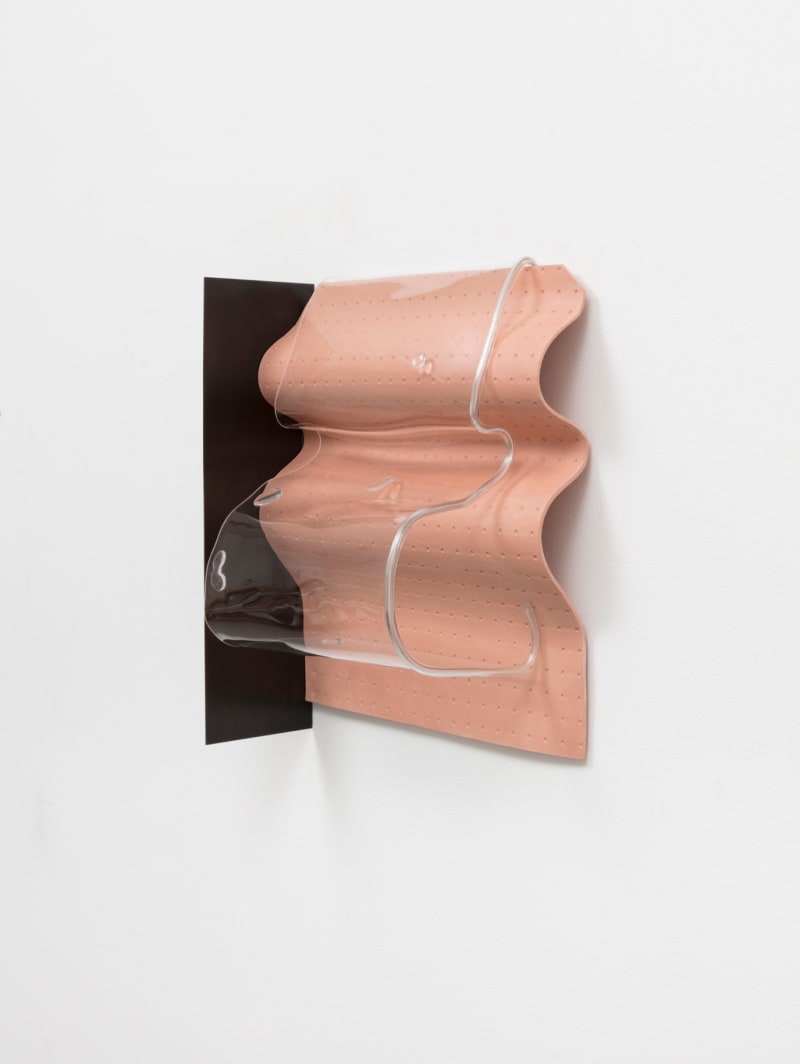
Alisa Baremboym, Patterns of response, 2017
47 Canal
I spent an inordinately long time at the booth of 47 Canal, my eyes darting back and forth between Alisa Baremboym and Anicka Yi’s sculptures. Yi’s mysteriously titled Moon Feet is a wall-mounted shelf displaying a small bouquet of silk flowers; Baremboym’s flesh-coloured ceramic form in a transparent vessel feels both sterile and familiar, like a prosthetic joint. These works are created by two artists whose practices are different but immensely rich, and their work is unquestionably difficult to grasp. They require much more time and attention than can be accorded during an art fair walk-through.
This year’s edition of Art Basel in Miami Beach puts sculpture on a figurative pedestal, highlighting its importance without sacrificing space reserved for other work. If there was ever a battle between mediums at art fairs, these presentations call a truce, bringing our attention instead to the exchanges between objects.
